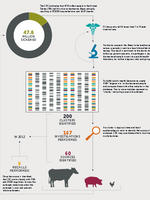
From Data to Decisions III

Today’s senior managers are tempted to begin analytics programs before determining the mission-essential questions they are seeking data to answer. Older data-based analytics efforts often grew out of the discoveries of line employees who made connections and saw patterns in data after receiving new software or hardware that helped them make sense of what they were studying.
This report examines programs that have been in operation for a longer period of time, which offers a better understanding of how they have advanced and evolved over time to be a sustainable component of a program’s operation. It highlights five analytic efforts that were begun, in one case, more than 25 years ago. These include cases from the U.S. Agency for International Development, the Centers for Disease Control and Prevention, the Defense Department, the Animal Plant Health Inspection Service, and the Veterans Health Administration. Based on these cases, the authors identify a series of lessons that they saw as important if analytics are to be successfully embedded in an agency’s culture.
One lesson from grassroots-driven older projects is that senior managers should not overlook the payoff that comes from enabling frontline employees to see and use data organized for their needs, not just the needs of senior leaders. Another important lesson in the report is that the long-term programs that have survived over time expended analytic efforts not just on mission improvement but also on demonstrating return on investment – reporting better outcomes was not sufficient.
Read/listen to all four editions of this series.
Read the article by the Washington Post.
Read the article by Government Executive.
Read the article by NextGov.
Watch the video of the report release and hear panelists contribute their thoughts on data analytics:



